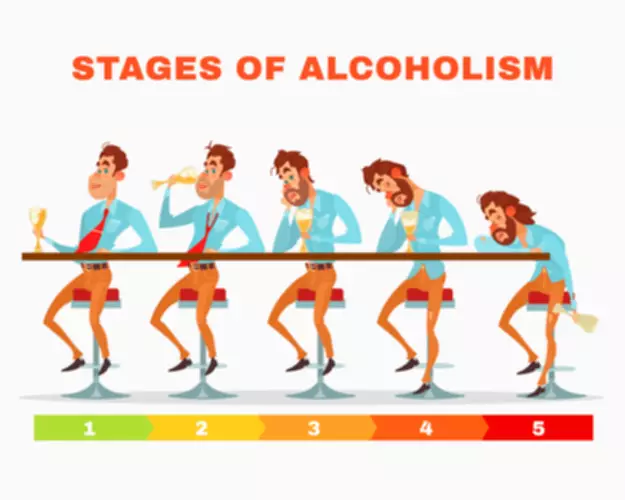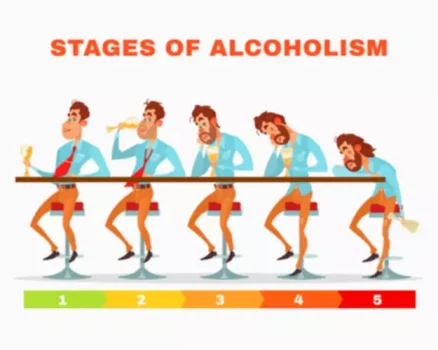
Alcohol tolerance on the other hand, refers to the way a person’s body reacts to the same amount of alcohol over time or with continued drinking. It is a common misnomer to equate alcohol sensitivity to alcohol tolerance. For postmenopausal women, the changes in estrogen levels significantly slow alcohol metabolism, said Fingerhood.

Alcohol and feeling sick

Alcohol tolerance refers to a lower effect of alcohol with repeated exposure. Although alcohol tolerance has been historically included in alcohol rehab diagnostic manuals as one of the key criteria for a diagnosis of alcohol use disorder (AUD), understanding its neurobiological mechanisms has been neglected in preclinical studies. In this mini-review, we provide a theoretical framework for alcohol tolerance.
What Role Does Tolerance Play in an Alcohol Use Disorder?
This finding supports the observation that alcohol tolerance decreases with age. Another significant factor affecting alcohol tolerance in older adults is the slowing of metabolism. As we age, our liver function gradually declines, impacting its ability to break down alcohol efficiently.
Changes in metabolism with age

Some people may be unable to drink alcohol without experiencing immediate feelings of sickness, or they may develop this over time after a prolonged period of drinking. Older adults are already at a higher risk of falls due to age-related factors like decreased balance and muscle strength. Alcohol consumption, even in small amounts, can exacerbate these risks by affecting coordination and judgment. While individual variations exist, many people start noticing changes in their alcohol tolerance as early as their 40s. However, the most significant decline often occurs after the age of 65. This metabolic slowdown means that alcohol remains in an older person’s system for a longer period, prolonging its effects and increasing the risk of intoxication even with moderate consumption.
The truth about tolerance: How much do you really know about your body’s relationship with alcohol?
A larger body mass index and a higher volume of plasma in the body contribute to the ability of larger people to consume more, many experts said. You and your community can take steps to improve everyone’s health and quality of life. The reason for it being more prevalent in people of Asian descent is that there is an accumulation of acetaldehyde, the primary chemical in ethanol, which develops due to a genetic condition that causes them to be unable to metabolize acetaldehyde. A study published in Nordic Studies on Alcohol and Drugs found that older adults who consumed alcohol were at a significantly higher risk of falls compared to non-drinkers, with the risk increasing with the amount of alcohol consumed. Taking a break from drinking can help,3,4,5 and can be an effective way of getting back on track to sticking to the UK low risk drinking guidelines.
How Long Does it Take to Reduce AT?
Dietary Guidelines recommend keeping drinking habits to a minimum, which they define as no more than two drinks per day for men and one per day for women. However, it’s not the only cause and developing a tolerance does not mean that you’ve developed an alcohol addiction. Rather, once you require more and more drinks to feel intoxicated, this can lead to a cascade of consequences, such as heavy alcohol use and alcohol dependence, that increase the risk of developing alcohol use disorder. And on the other hand, you can be diagnosed with AUD without exhibiting alcohol tolerance, as long as you meet the criteria.
While no single “alcoholism gene” exists, certain genetic variations can increase the risk of developing AUDs. Genetic variations in alcohol metabolism are not evenly distributed across populations. Some ethnic groups have higher frequencies of certain enzyme variants, leading to differences in alcohol tolerance and drinking patterns. Two key enzymes, alcohol dehydrogenase (ADH) and aldehyde dehydrogenase (ALDH), are at the heart of this process.
- This process is simple to understand but hard to follow, yet it works miracles in reducing alcohol tolerance.
- However, high tolerance increases your risk for other problems, such as functional or metabolic tolerance, alcohol dependence, and alcoholism.
Everyone can develop tolerance to some degree, but for some, it’s easier than others. Some people are born with a higher tolerance to alcohol, and this can be a predictor for alcoholism later in life. People may be unable to drink alcohol without feeling sick as a result of a hangover, lack of sleep or food, or alcohol intolerance. An alcohol intolerance occurs when someone’s body lacks the enzymes to suitably digest alcohol. As a result, a person may experience facial flushing and skin and digestive issues. A person’s tolerance may also change over time due to a decline in body mass in older adults.

Alcohol Dependence
People who rarely drink may also find that they have low alcohol tolerance. The danger of alcohol tolerance is that your blood alcohol content level continues to rise and increase the dangers of overdose, even if you don’t feel the effects of alcohol. While the other three types of tolerance focus on alcohol’s effects on the brain, metabolic tolerance refers instead to the rapid elimination of alcohol from the body following prolonged or heavy alcohol consumption. That said, rewinding to the part about cutting back on drinking, it’s worth noting that alcohol speeds up the aging process because regular drinking can result in a loss of skin elasticity, which may mean an increase in fine lines and wrinkles. “Alcohol also decreases lower alcohol tolerance cellular efficiency throughout the entire body, making our vital organs function less efficiently, leading to chronic disease. Plus, it’s a depressant affecting behavior and making it difficult to think clearly and make executive functions,” Dr. Schwartz explains.
- DSM-5 (American Psychiatric Association, 2013) includes several alcohol tolerance-related questions for AUD, such as, in the past year, have you “Had times when you ended up drinking more, or longer, than you intended?
- Each type of tolerance is likely to lead to an increase in alcohol consumption and amplify your risks for developing dependence, organ damage, problems with completing tasks, and ultimately addiction.
- If the drug does not generate a sufficient b-process, then it follows that tolerance does not develop.
- This is an area where a correlation, however strong, doesn’t indicate an actual causal relationship between two conditions.
- Alcohol withdrawal occurs when you are physically dependent on alcohol and suddenly stop drinking or significantly reduce the amount you consume.
D-arginine, an inactive isomer of L-arginine, had no effect on rapid tolerance in the tilt-plane test (Wazlawik and Morato, 2002). Male rats that were treated with soluble guanylate cyclase inhibitors did not develop rapid tolerance in the tilt-plane test (Wazlawik and Morato, 2003). Collectively, these findings indicate that nitric oxide activity is important for the development of tolerance during alcohol intoxication. Building tolerance is not just a sign of increased alcohol consumption but also a marker of physiological changes that could have significant health implications. Drinking past a .05 BAC level can also raise your tolerance to alcohol. Contrary to popular belief, drinking more alcohol won’t prolong a good feeling; .05 is still your peak buzz.